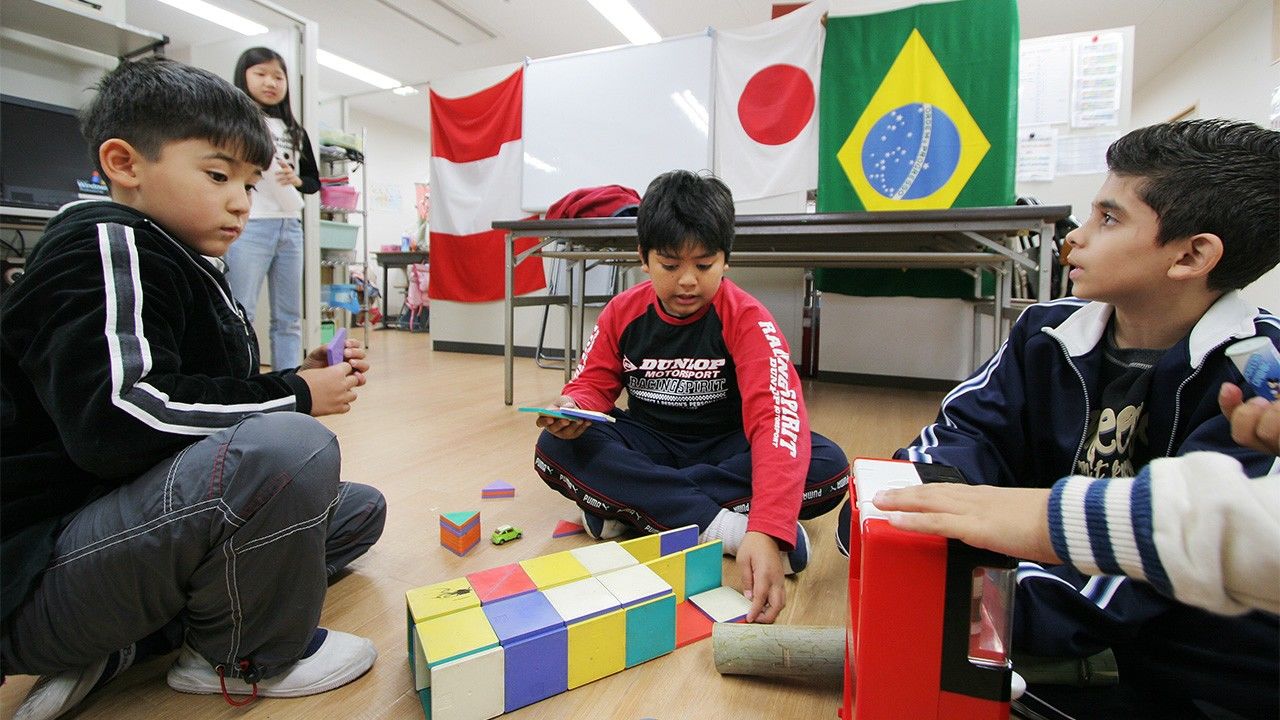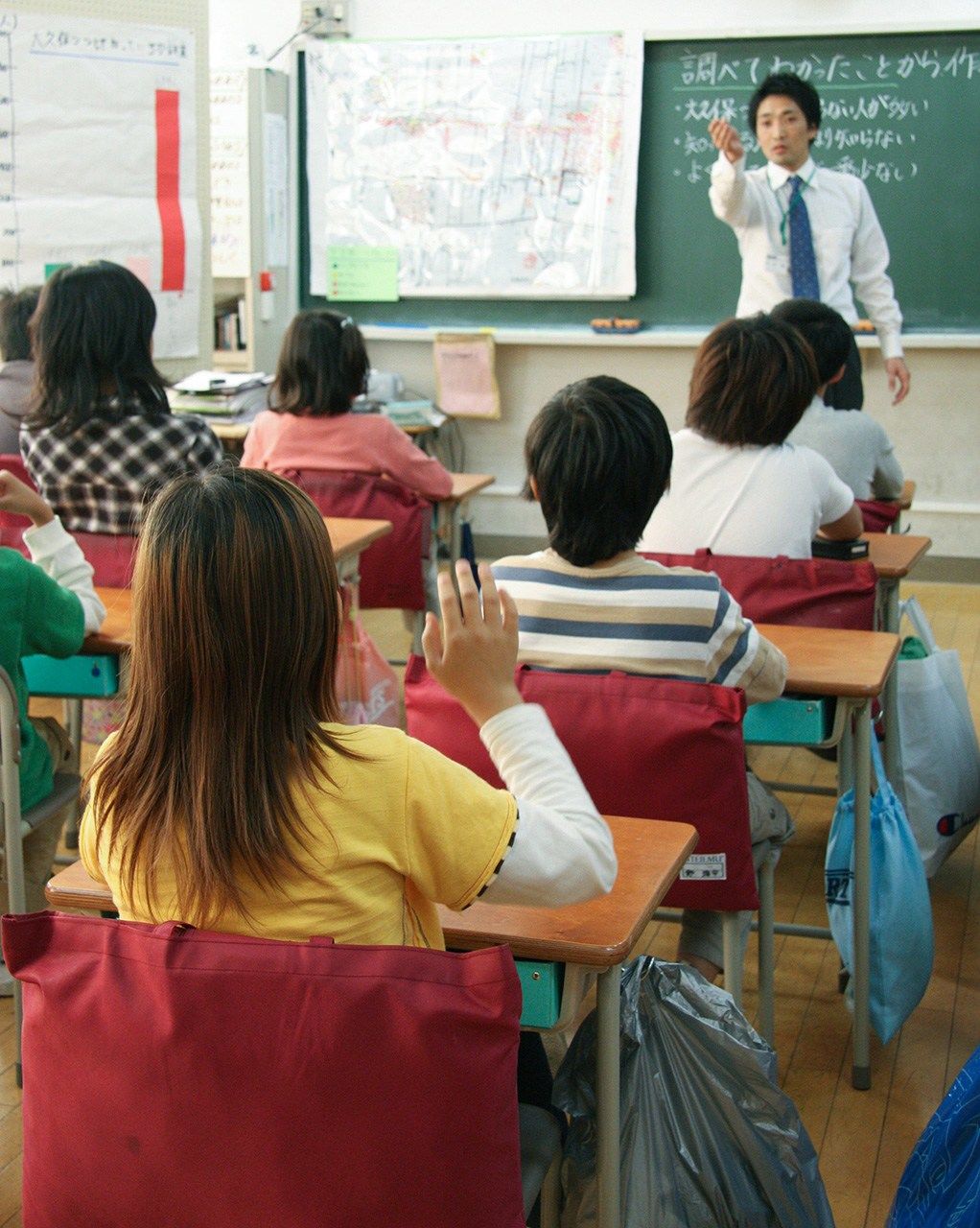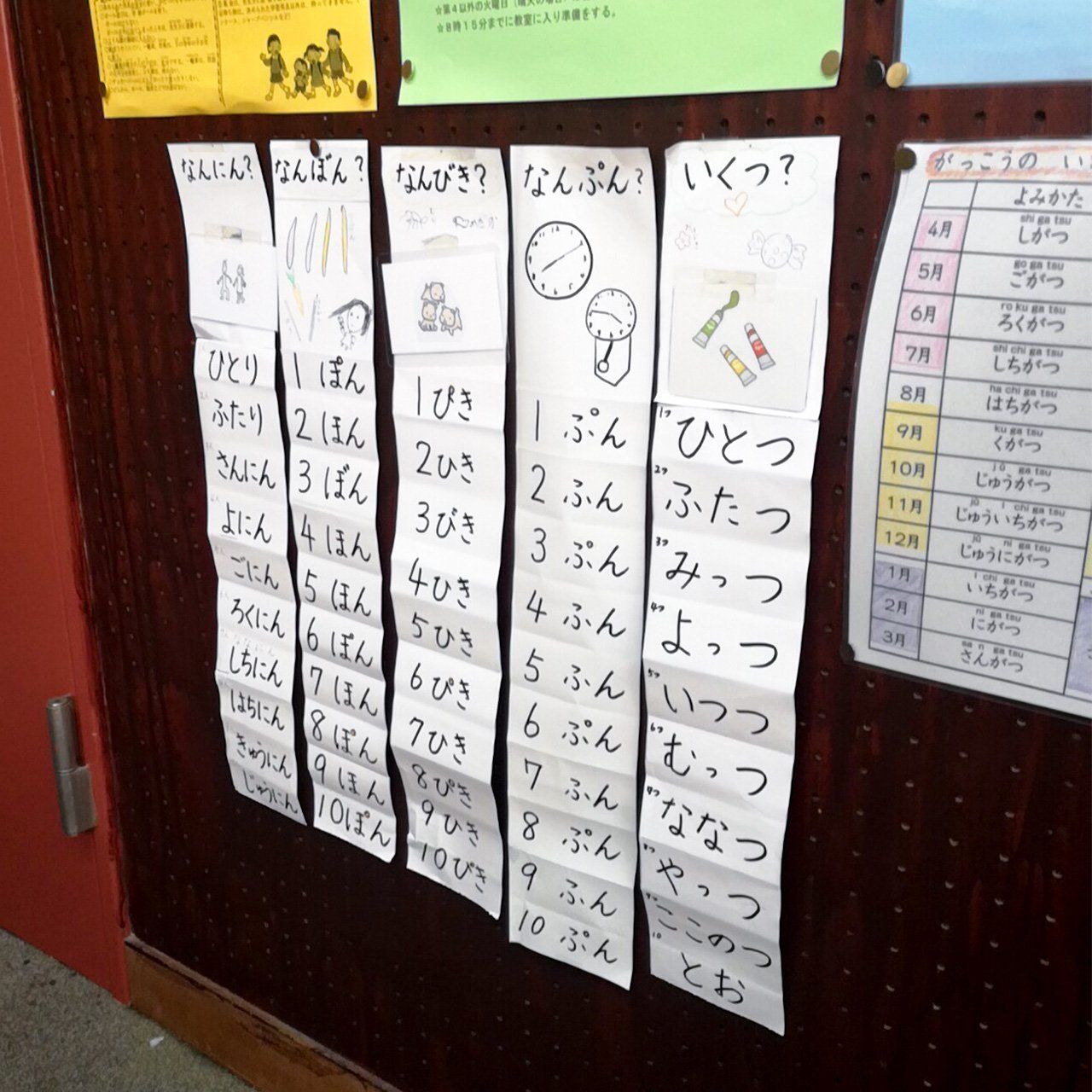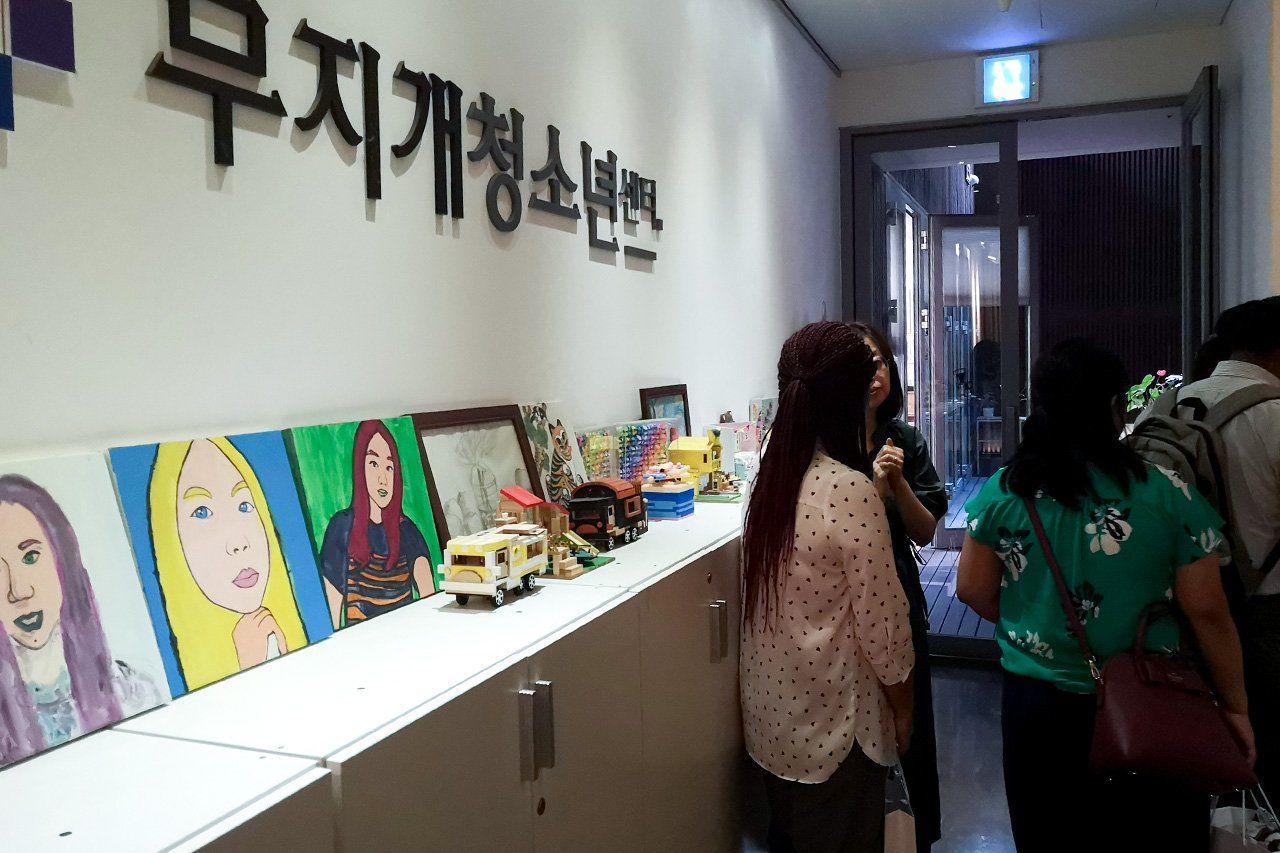
Japan’s Immigration Policies Put to the Test
A Crying Need for Japanese-Language Instruction Among Immigrants
Education Language Politics Society- English
- 日本語
- 简体字
- 繁體字
- Français
- Español
- العربية
- Русский
The number of foreign residents in Japan has been growing by about 150,000 annually since 2014, reaching an all-time high of 2.8 million in 2019. At a time of mounting concern over labor shortages and other consequences of demographic aging and population decline, these newcomers—most of whom are under 30—represent a vital resource. The crucial question is whether they can build rewarding lives as productive and accepted members of Japanese society. That will depend very much on their ability to communicate in Japanese, a notoriously difficult language for foreigners to learn.
Unfortunately, it is not at all unusual to encounter foreign residents who are functionally illiterate in Japanese even after living here a decade or more. Many are ill-equipped to cope in the event of an emergency.
The Japanese government must bear much of the blame for this state of affairs. While Germany, South Korea, and many other countries sponsor semi-mandatory orientation and social integration programs, including language instruction, the Japanese government has left it to local communities to respond as they see fit with the resources at their disposal. Fortunately, that is beginning to change.
Signs of Change
The impetus for change has come from the passage in December 2018 of the amended Immigration Control and Refugee Recognition Act, which officially opened Japan’s doors to lower-skilled foreign workers. In conjunction with the new law, the government announced a package of “comprehensive measures for acceptance and coexistence of foreign nationals.” Although this policy document does not have the force of law, it articulates a commitment by the Japanese government to support the social integration of foreign nationals. This in itself is a major step forward.
With regard to the specific issue of language training for foreigners, the measures include budget allocations for improvement and expansion of the existing “community Japanese-language education” program, which relies on local volunteers, with the goal of ensuring access to instruction in all communities nationwide. It also earmarks funds for the development of multilingual online language-training resources to meet the diverse needs of learners.
In the spring of 2019, the Commission on Japanese-Language Education (an advisory organ under the Agency for Cultural Affairs), of which I am a member, began deliberations on specific measures aimed at improving the level of Japanese-language education in Japan. One major agenda item is the development of a national system for the certification of qualified instructors. The goal is to boost the skills and expertise of Japanese-language teachers; to enhance the prestige of the profession; and to raise the level of Japanese-language education in Japan. We are also considering steps to standardize Japanese proficiency testing and align proficiency levels with those of the Common European Framework of References for Languages.
The Responsibility of the State
Meanwhile, an even more important step forward came in June 2019 with the enactment of a new law that recognizes the government’s responsibility to offer Japanese-language education to foreigners living in Japan. The bill was drafted and submitted by a cross-partisan group of lawmakers led by former Minister of Education Nakagawa Masaharu. While cognizant of the need for far-reaching, comprehensive legislative action to facilitate integration of foreign nationals into Japanese society, Nakagawa decided to place top priority on a Japanese-language education bill in the belief that it addressed an urgent need and was likely to win broad support in the Diet.
Article 1 of the law states that the government “shall carry out comprehensive and effective measures for the promotion of Japanese-language education and thereby contribute to the creation of a dynamic, inclusive society that respects cultural diversity.”
The law’s significance consists in its stipulation that providing Japanese-language education for foreign nationals in Japan is “a responsibility of the state.” It calls for a basic policy to be drawn up by the Ministry of Education, Culture, Sports, Science, and Technology (MEXT) and approved by a cabinet decision. It also calls on local governments to draw up policies consistent with that of the central government.
Notwithstanding the recent change in the Immigration Control Act, the government of Prime Minister Abe Shinzō continues to insist that it is not adopting “immigration policies” in the sense of measures to encourage or facilitate the permanent settlement of foreigners in Japan. Amid this denial, the explicit commitment to providing Japanese-language education to foreign nationals as a foundation for their acceptance and meaningful participation in an inclusive society is a major step in the right direction.

Japanese-language instruction at Ōkubo Elementary School (Shinjuku, Tokyo), where about 30% of the students are foreign nationals, relies on community resources, including volunteer instructors. © Jiji
Challenges on the Ground
But to get a real sense of the task before us, we need to heed the actual voices of foreign residents and those attempting to serve them at the community level.
The Shinjuku Multicultural Community Building Committee was established by municipal ordinance in Shinjuku, Tokyo, where foreign nationals from more than 130 different countries account for 12% of the population. The committee, which I have the honor to chair, consists of more than 20 Japanese and foreign residents representing various demographic segments of the community. The members gather once every few months to discuss the challenges and issues confronting Shinjuku’s foreign residents. In the course of chairing these meetings, I have learned a great deal about the issues surrounding Japanese-language learning and teaching in this diverse community.
The first point to understand is that most foreign residents here are genuinely eager to study Japanese but find the obstacles daunting. While Shinjuku’s international community includes corporate executives with ample time to learn the language, many other foreign residents are juggling school and work, often holding multiple jobs. Mothers with small children, likewise, have very few options when it comes to attending language classes. We need to recognize and accommodate the increasingly diverse and complex circumstances of Japan’s foreign residents.
I also hear many complaints from the teaching side. In the absence of funding from either the central or local government, community-level Japanese-language education has had to rely on volunteers. Most are middle-aged or older married women who only want to teach during daytime hours on weekdays, and more and more are retiring from their volunteer jobs. As a result, Shinjuku’s community Japanese programs suffer from an acute shortage of personnel. Nor are they equipped with the resources and expertise to meet the diverse learning needs of this growing population. The question many people are asking is whether continued reliance on volunteers is a viable option.
Foreign residents also stress the need not just for Japanese instruction but also for direct “life guidance” to equip people from other cultures with the practical skills they need to function on a daily basis. A committee member representing the Nepalese community, for example, has made the point that an increasing portion of the young Nepalese who come to Japan to study or train have no previous experience with urban living. They come from rural areas and have never even been to Kathmandu. It is essential, he argues, that such people receive a basic orientation immediately after arriving if they are to avoid the pitfalls of navigating this alien environment. Providing such orientation could head off needless trouble.
Although Shinjuku’s municipal government has prepared living guides in multiple languages, which it issues to foreign students and trainees when they arrive, it offers no orientation classes, nor am I aware of any local governments that do so. As the foreign population of Japan diversifies, the central and local governments must work together to develop and institute an orientation program for new arrivals, along with Japanese-language instruction geared to foreign nationals who must learn local customs while living and working in Japan.

Learning aids posted on a bulletin board at Shinuku’s Ushigome-Nakano Elementary School, where Japanese-language classes are held. © Menju Toshihiro
A Brewing Educational Crisis
Although adequate Japanese-language instruction for adults is critical, the educational needs of foreign children today are even more pressing.
According to data published by MEXT, as of May 1, 2018, there were 50,759 students in Japanese public schools identified as needing remedial Japanese-language instruction—an increase of 6,812 from the previous survey two years earlier. A recent MEXT survey found that, of the high school students identified as requiring remedial Japanese instruction as of 2017, a full 9.6% subsequently dropped out, as compared with a 1.3% dropout rate overall. Of the students requiring remediation who graduated in 2017, only 42.2% subsequently enrolled in a university, college of technology, or other postsecondary school, as compared with 71.1% of all 2017 high school graduates. A full 18.2% of them were unemployed, as compared with a 6.7% rate overall.
Learning to speak Japanese is not the biggest linguistic challenge facing foreign schoolchildren in Japan. The biggest challenge is kanji. During their six years in elementary school, Japanese children learn to read and write more than 1,000 kanji. Foreign children who transfer into the system after the beginning of third grade are already at a serious disadvantage. Poor reading skills tend to affect academic performance in almost every subject. By fifth or sixth grade, when many Japanese schoolchildren are already attending juku or enrichment programs, foreign students often find themselves socially isolated. Bullying is also a serious problem.
In places like Tokyo and Hamamatsu (Shizuoka Prefecture), where foreign students are no longer a rarity, many teachers work extra hours coaching them to improve their Japanese skills and help them catch up academically. A few schools have even hired additional faculty and staff in order to offer pull-out classes, with interpreters providing assistance. But only a fraction of the foreign children living in Japan have access to such support.
Foreign students face a major hurdle when it comes time to take the high school entrance examinations. The test results determine what kind of high school they can attend, which in turn determines their college and career prospects. And the vast majority of foreign students must take the written examination in Japanese in direct competition with their Japanese peers. In big cities like Tokyo and Osaka, there are a few schools that offer special admissions processes for foreign students, and there are also a growing number of nonprofits and other organizations dedicated to helping those students. But again, all too few have access to those services.
As the foregoing suggests, the academic and social pressures of school education in Japan can be overwhelming for young foreign nationals. When the stress builds up, students are apt to avoid school or simply stop attending altogether. In Japan, elementary and junior high school education is compulsory only for Japanese citizens, not for the children of foreign nationals. As a consequence, when a foreign student drops out, school authorities seldom intervene.
Leaving these children uneducated and unsupervised cannot possibly be a good thing, either for them or for the community as a whole. The government needs to address this brewing crisis by drawing up a robust policy for educational support, intervention, and accommodation and implementing it rigorously at the local level in collaboration with foreign residents, NPOs, Japanese-language instructors, and others.
Leaving No One Behind
Some progressive municipalities are leading the way with their own initiatives to support the adjustment and social integration of foreign nationals living in Japan. The city of Yokohama has established the Himawari Japanese-language support center to help recently arrived children adjust to Japanese schools. Hamamatsu has launched a program to ensure that all foreign children attend school. But for most municipalities, the education of non-Japanese children is still uncharted territory.
South Korea has established Rainbow Centers at 25 locations around the country to provide basic instruction in Korean language and customs to foreign children before they enter school. By comparison, Japan has only begun to develop dedicated facilities for such purposes, and it has a long way to go in terms of training and hiring the qualified professionals—including language teachers and interpreters—needed to staff them.

Seoul’s Rainbow Center is one of 25 public facilities in South Korea that provide language instruction and other support for foreign children entering South Korean schools. It also offers employment support services for adults. © Menju Toshihiro
The number of foreigners living in Japan is now roughly equal to the entire population of Hiroshima Prefecture. They have much to contribute to Japanese society, both culturally and economically. But that potential will go untapped in the absence of a concerted effort to develop our language-education infrastructure. Through flexible partnerships with municipalities and nonprofits, the government must actively support language and social-integration programs tailored to the needs of individual communities and fulfill its responsibility to “leave no one behind.”
(Originally published in Japanese. Banner photo: A classroom at a neighborhood school and daycare center for the children of Japanese-Peruvian and Japanese-Brazilian immigrants employed at a nearby factory in Toyota, Aichi Prefecture. © Jiji)